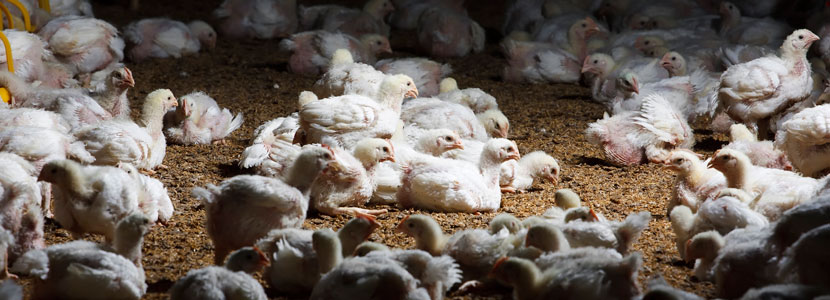Content available at: Español (Spanish) العربية (Arabic)
By Jose Luis Valls García, Veterinarian, Poultry Adviser
Air surrounding us is not an exception, so in some way room temperature can be “measured”, by measuring temperature of the most external layer of skin in contact with it, and feeling more or less comfortable whether it is higher or lower.
Apparent temperature is the reaction of living beings to the set of ambient conditions determining climate from a thermal point of view. We often say that it is hot or cold, according to what a normal thermometer says, however not only temperature (dry air temperature) determines the “real feel” of a human being, but other parameters are likewise involved which may improve or worsen the real feel or apparent temperature.
Most influential factors are ambient relative humidity and air velocity.
This apparent temperature, which corresponds to the skin temperature, is significantly influenced by several factors, and in such a way that our natural temperature “meter” may noticeably differ from a physical thermometer. Therefore, you may feel the temperature as colder or hotter than it really is when considering only the ambient temperature.
Adequate temperature maintenance at the start of the rearing period of birds is crucial. Only watching the chick’s behavior and their distribution in the shed, in relation to the sources of heat, will indicate to us whether the manner in which temperature is handled is correct.
Graph 1. Apparent temperature based on relative humidity and chicken age (Dr. Malcolm Mitchel-Scotland Agriculture University)
Relative humidity is one of the factors which, as has already been seen, together with temperature will have an impact on the initial behavior of chicks and on their future behavior afterwards during the rearing period. Such is the relationship between temperature and humidity that their variation will modify the bird’s state of comfort.
Temperature of birds must always be determined with existing humidity.
Temperature and humidity control, apart from achieving a better apparent temperature for birds and reaching a higher level of animal well-being, may save us a lot of money when it comes to rearing heating. However, only if we have a rigorous control of both parameters should we attempt to correctly handle this binomial. Otherwise, we will harm the birds as a consequence of our mistakes and later reap the fruits of our errors.
Graph 1 confirms that the apparent temperature received by birds at a determined temperature and humidity – red circle – is the same apparent temperature as that received at another determined temperature and humidity – green circle. But the temperature grade difference between one apparent temperature and the other is important.
This possibility of comparing apparent temperatures must be made within the logic parameters for bird rearing, since if we maximize apparent temperature comparisons, we may arrive to excessive humidity levels, for example, which will finally and inevitably ruin the rearing litters.

